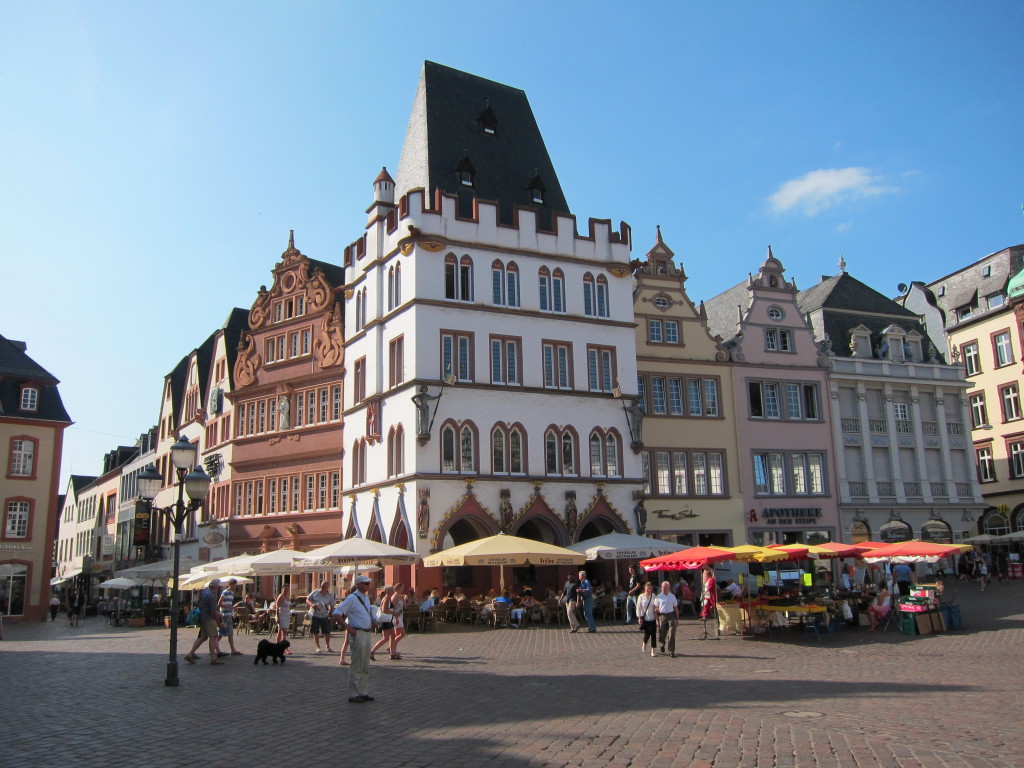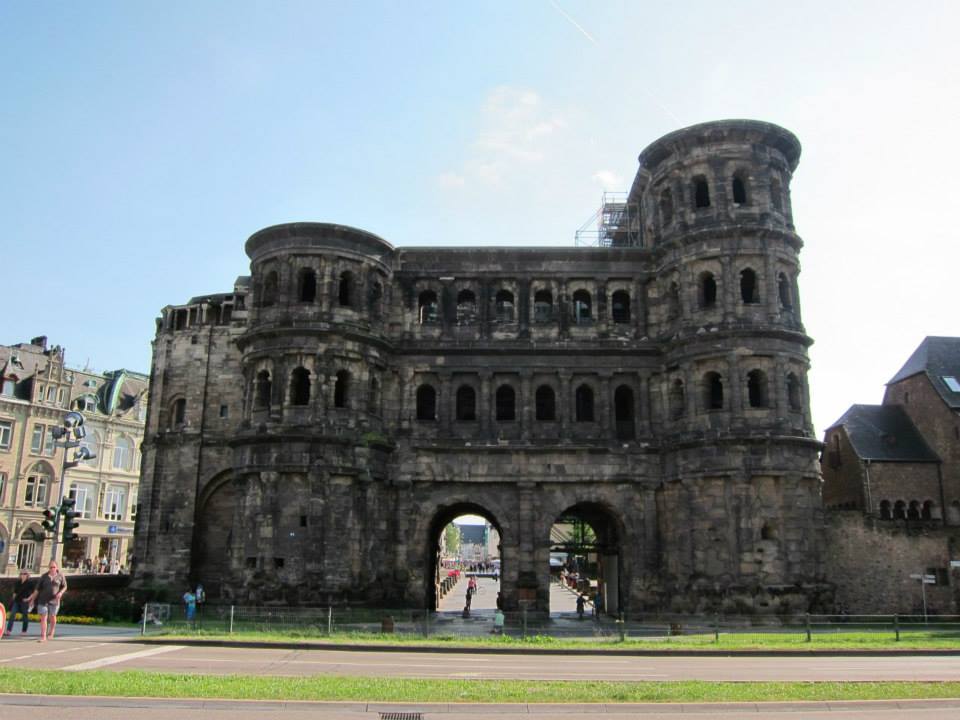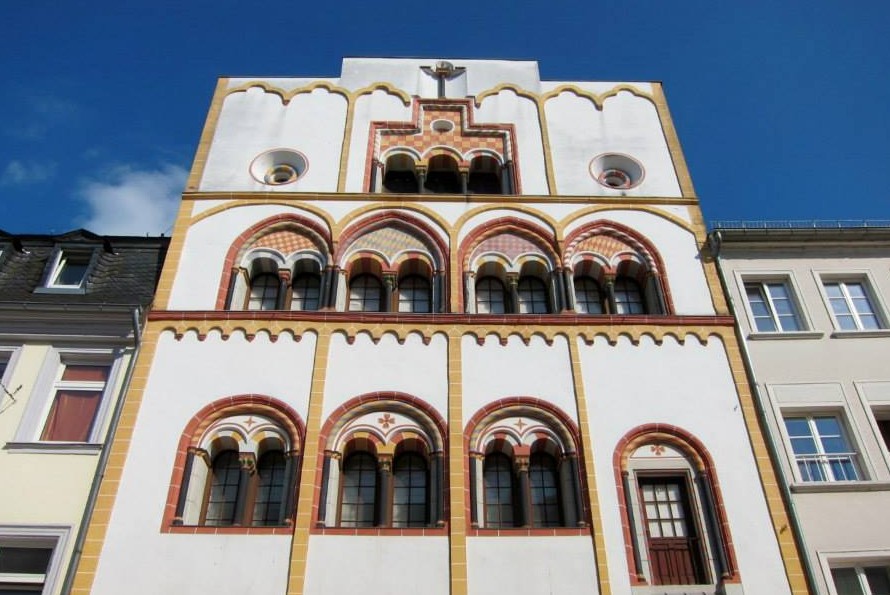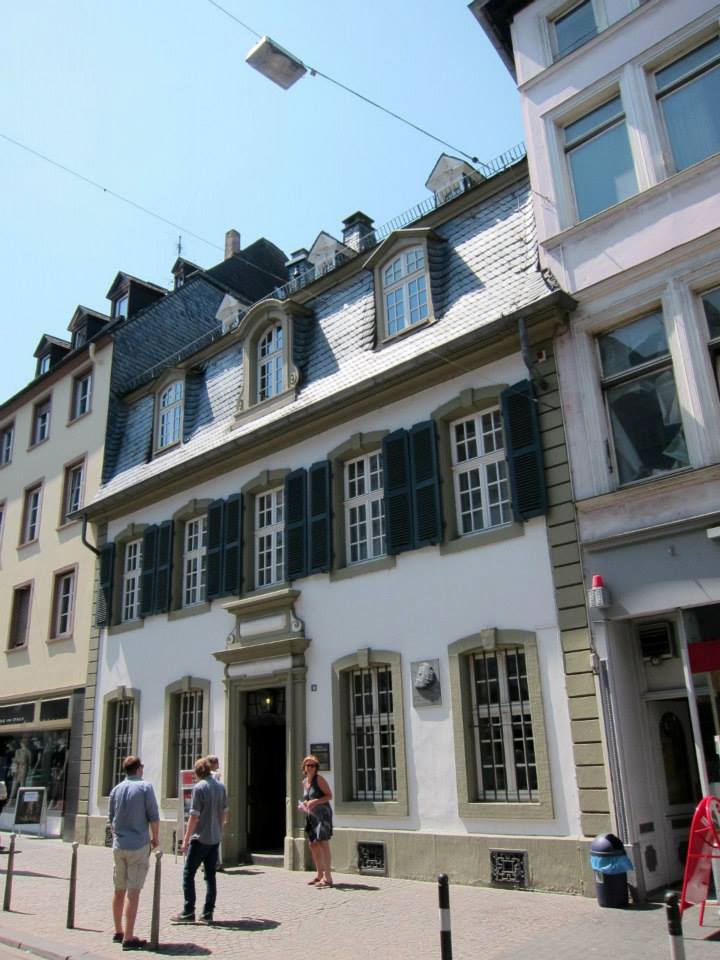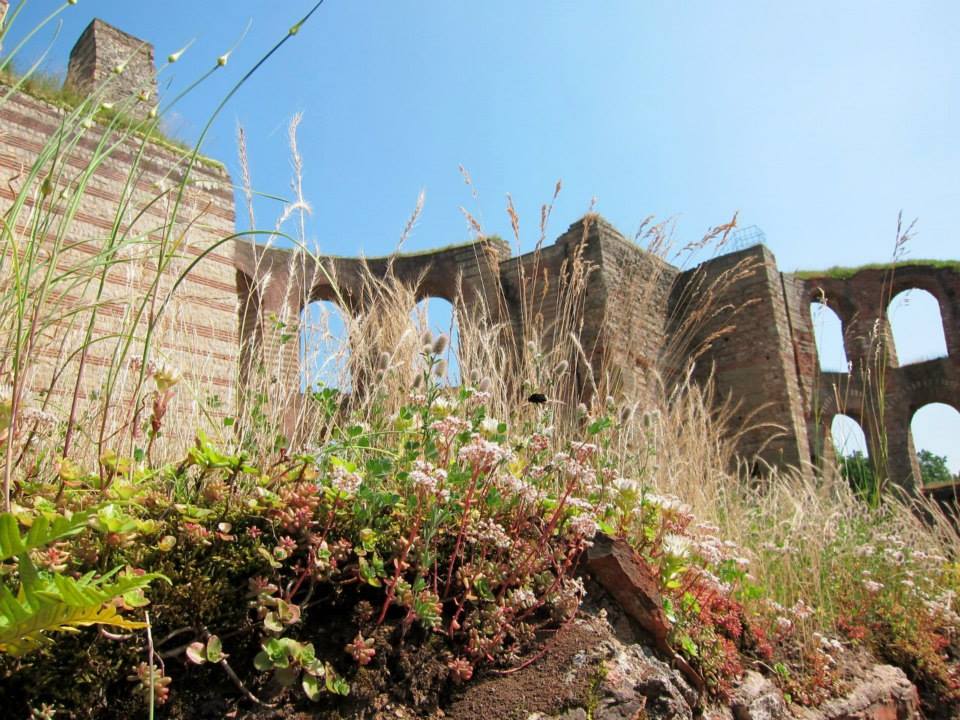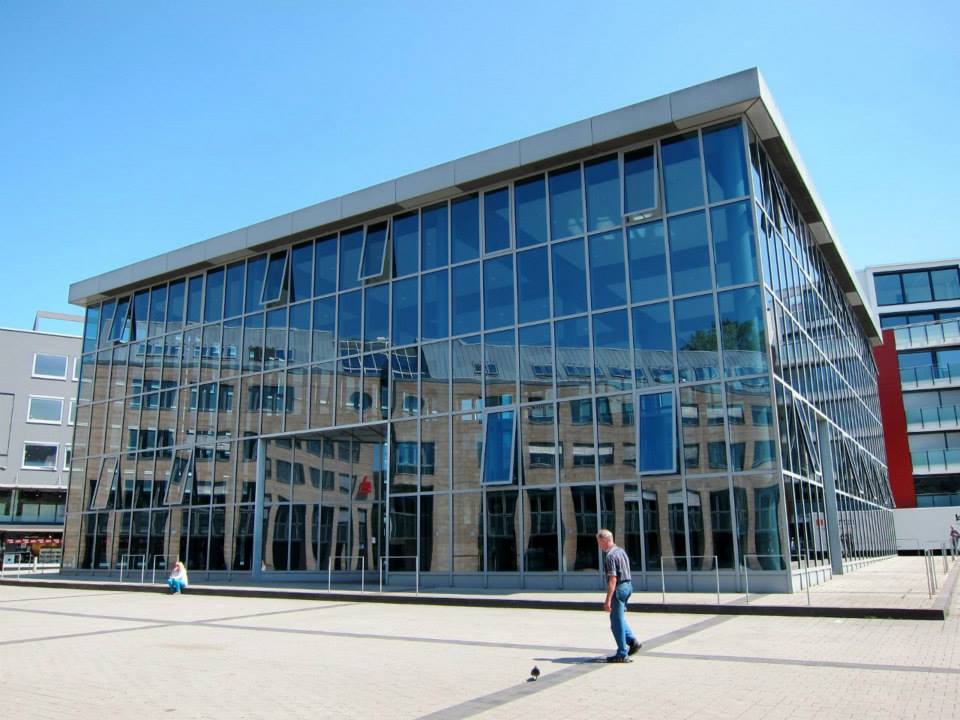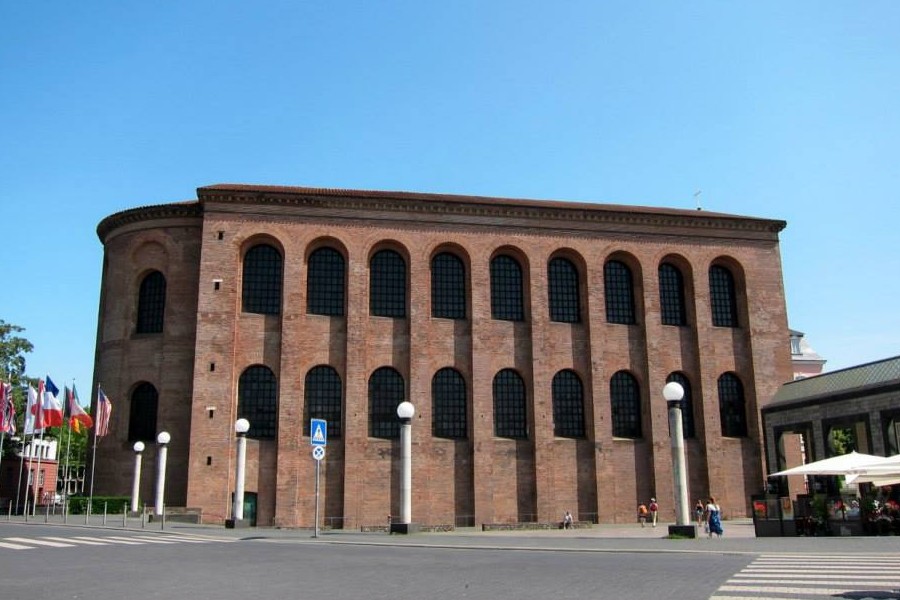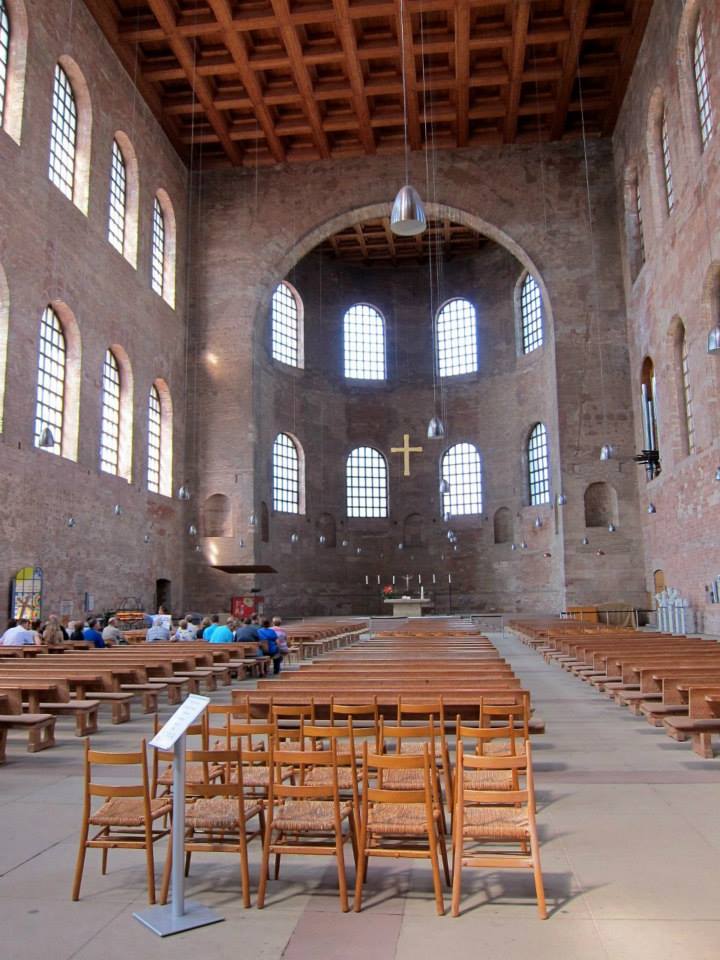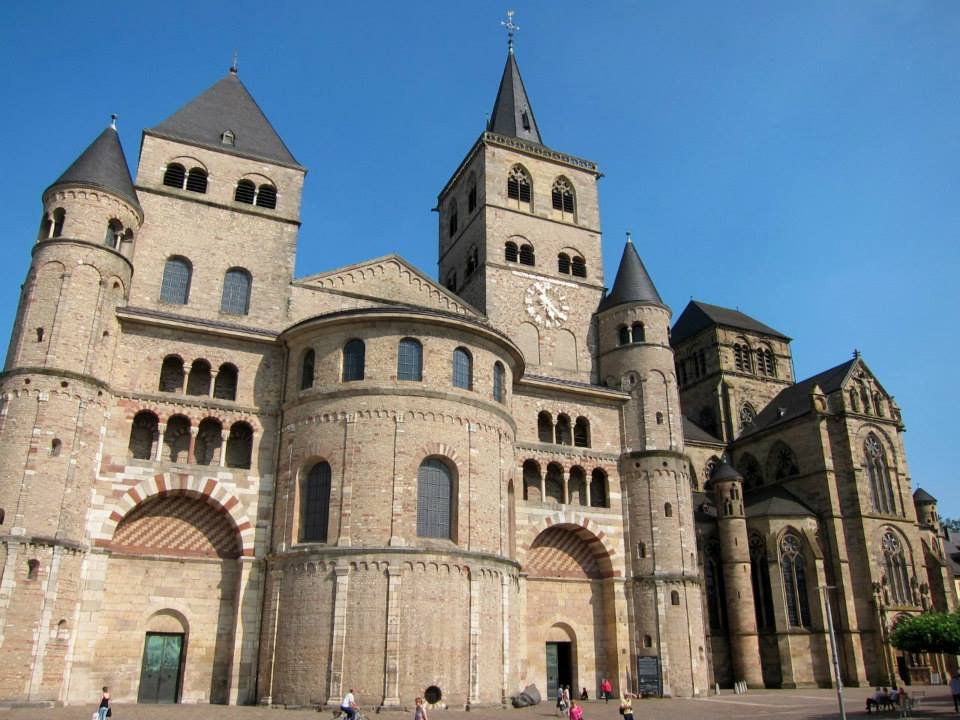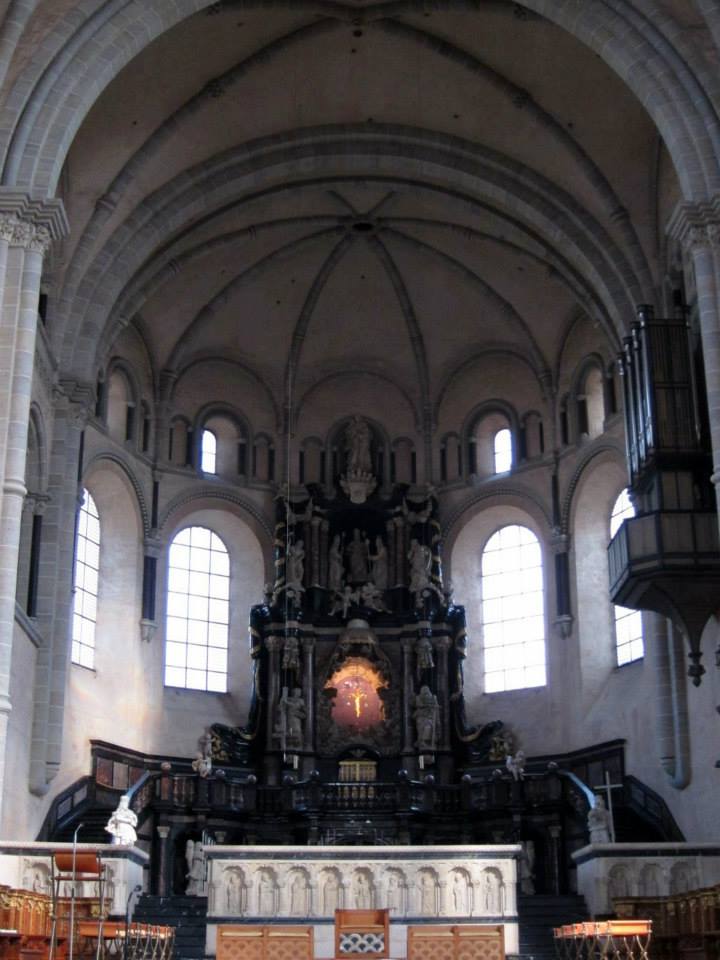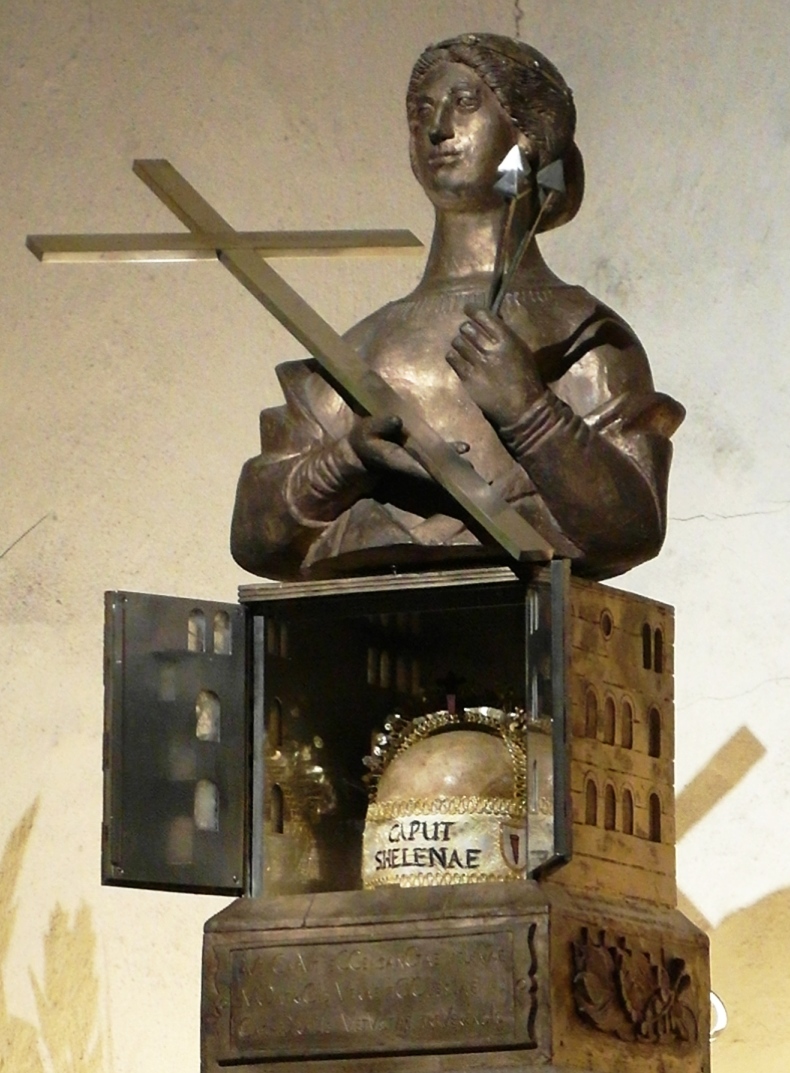6 Hours in Trier: The Ancient Roman City’s Top Draws
ANTE ROMAM TREVIRIS STETIT ANNIS MILLE TRECENTIS.
PERSTET ET ÆTERNA PACE FRVATVR. AMEN.
The inscription on the Red House reads, “Trier stood thirteen centuries before Rome. May it persist and enjoy eternal peace. Amen.” I didn’t have forever to explore it, however; once my friend Yvonne was able to join me after her classes, we had all of six hours to look at the ruins before I had to return to Cologne, which was just enough to cover its most fascinating highlights.
What to see in Trier
Let me get the disappointment out of the way first: Trier may be a storied city with a long history, but it hardly looks like a fairy tale. It was heavily bombed by the Allies during the Second World War – so much for everlasting peace – and as a result, the architecture is largely a mix of restored mediaeval structures and 20th Century buildings, just like many other cities in Germany that were also attacked.
What sets Trier apart is the variety of Roman ruins around the city that were mostly (and fortuitously) spared by the air raids. They occur in greater density here than in any other city on this side of the Alps, so much so that they are on the list of UNESCO world heritage sites.
Porta Nigra
The most recognisable of these ruins is probably the Porta Nigra. The largest Roman city gate still standing this far north was hard to miss as we walked into town from the train station. Some guides dressed as Roman soldiers were running around the place for a skit in front of a bunch of school kids.
The north side looks better early in the morning and not at midday, which was when we visited it in this photo. A mediaeval hermit once locked himself in the Porta Nigra for the rest of his life; when he was canonised, it became part of a church which is now the Simeonstift complex. Hermits often do crazy things but this one probably saved the gate from further destruction.
Just a few metres down the pedestrianised street is this unusual looking house, named after a portrait of the Magi that was once displayed. No chance of taking a look around inside, although there was a restaurant with al fresco seating out in front.
We headed southwest to the other side of the city and dropped into the childhood home of Karl Marx. I shouldn’t need to introduce him but I’ve met kids whose general knowledge has been found wanting. So, yes, this was the birthplace of the father of sociology.
The house is now a museum dedicated to his life, work and legacy. Yvonne informed me that it attracts heaps of Chinese tourists to Trier, and the signs in simplified Chinese attest to that. Judging by all the souvenirs emblazoned with his name, however, I think Marx is rolling in his grave right now.
Karl Marx Strasse also led to another sight, the Römerbrücke. The millennia-old piles stick out at right angles to the arches they support, which are about 1600 years younger, but the bridge still qualifies as the oldest working one in the country. It could have been worse if it had been blown up during the war; the charge brackets that were intended for the task are still there.
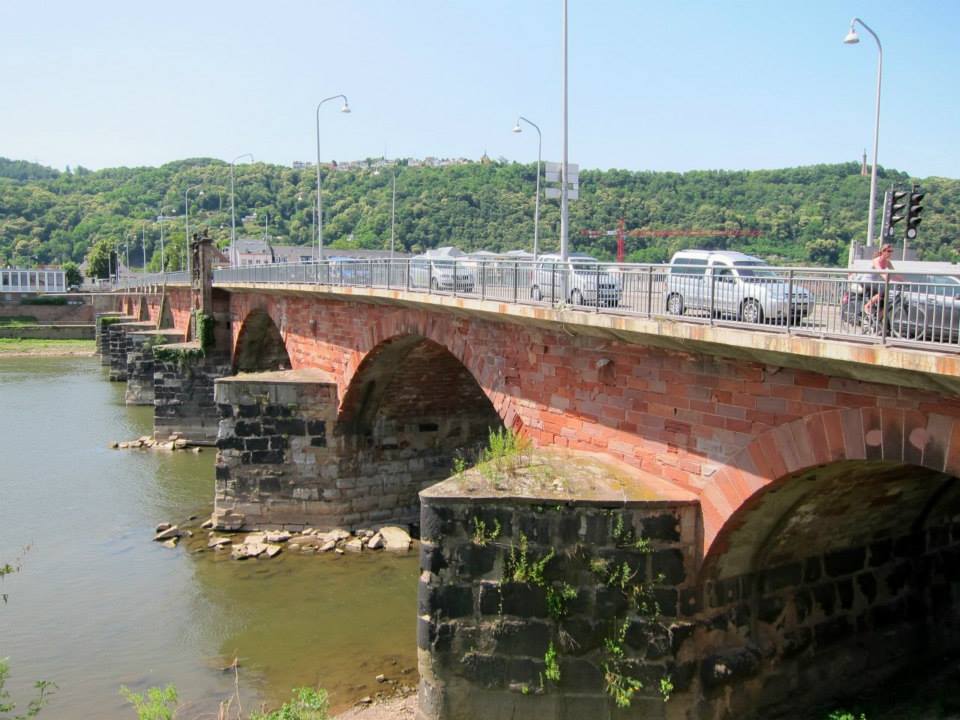
Baths & Sports
Three different Roman baths have been excavated in Trier but none of them is operational, unlike their counterpart in England. The massive Barbarathermen just southeast of the bridge was closed (it still is), so we walked further along to the remains of the Kaiserthermen.
Grass covered most of the Kaiserthermen but a part of the wall still stands and shows off the patterned brickwork. It was very atmospheric and it would make a great picnic venue. A round of hide-and-seek could follow in the underground tunnels. They are a bit narrow in places but feature plenty of skylights, so they don’t feel claustrophobic. I don’t think picnicking is prohibited, but I can’t be sure as the signs were only in German.
Other baths
The construction of a parking structure unearthed the forum baths in the Viehmarkt in 1987. That was stopped and a glass box was erected over the site. It’s now a museum too, one that we could look into from the outside for a few minutes.
The square still serves as a garage once a year when the WRC comes to town for Rallye Deutschland. Admittedly, if it wasn’t for the rally I might never have heard about Trier. The lucky woman next to me got a photo with Kimi Räikkönen here a few years ago. We had lunch at a nearby restaurant that specialised in fried potatoes, and I opted for wurst and vietz (dry apple cider) with my portion.
Ancient sports took place in the Roman amphitheatre which lies east of the Kaiserthermen. We left it out owing to my time constraints, but like the baths it requires some imagination and the extensive underground sections take some time to explore. There are more guides dressed as gladiators, and it still serves as a venue for less-bloodthirsty events such as concerts these days.
Churches and relics from the dawn of Christianity
Aula Palatina
Just north of the Kaiserthermen is the Aula Palatina, the former throne room of Constantine, the emperor who made Christianity the religion of the Roman empire. It used to be part of a complex of palaces that grew over the centuries; today it serves as a Lutheran church. It is still physically attached to the Electoral Palace and the pretty gardens next door.
The windows change in size as one gets further from the altar and make the interior look bigger than it really is. It is also more spartan than it used to be (as the photographs on the walls reveal) since the church was one of the Roman structures that had to be rebuilt after the war.
Statues of Christ and his apostles once occupied niches behind the altar, but only their heads remain on display. A new main organ was installed on the south wall last year, 70 years after the old one played itself as the basilica burnt. The video about the new instrument includes photos of the ruins.
Dom and Liebfrauenkirche
In contrast, the interiors of Trier’s Romanesque cathedral (Trierer Dom) and the Gothic Liebfrauenkirche next to it are still occupied by massive funeral monuments and ornate chapels. The excesses of the mediaeval church spoilt the eyes wherever I looked. Like other Catholic churches this old, there were just so many detailed surfaces to admire.
It’s possible to walk from one building right into the other, but they are worth admiring from the outside too. The Gothic elegance of the Liebfrauenkirche makes the fortress-like cathedral look even more imposing, and vice versa.
The Dom also houses a couple of important relics. The skull of Empress Helena, Constantine’s mother and the reputed finder of the True Cross, is in the crypt, and pilgrims venerate a tunic as the garment that Christ wore during his Passion. Arrive on the right (or wrong) time and the place will be heaving with pilgrims.
No idea if the relics still work miracles, but I considered it a blessing that I made the train with time to bid Yvonne farewell.
Trier is a history buff’s delight
And maybe that’s why it’s not every tourist’s lips. There is also a lively student population from the university when it’s in session, but those are the strongest things going for it. A counter-culture like Berlin’s wasn’t as obvious; it doesn’t have a massive festival like Munich’s Oktoberfest to spread its fame; shopaholics used to big cities will weep from boredom.
I liked it that way though. It’s wonderful to have visual reminders of a culture that has evolved over two millennia and be able to see them without going elbow-to-elbow with other tourists. That’s a peace I definitely appreciate.
